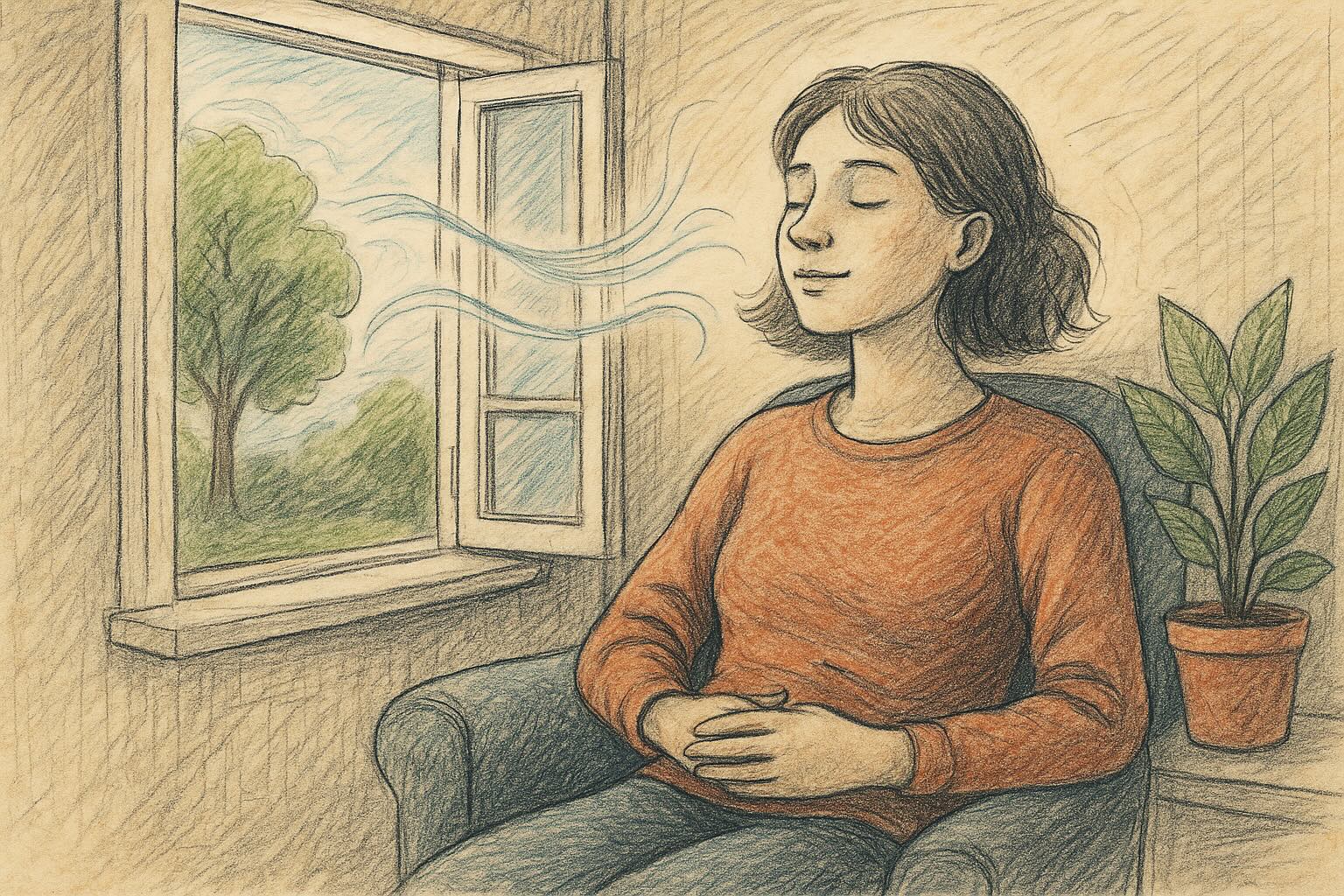We’ve long known that air pollution can be brutal on our lungs. The headlines practically write themselves: smoggy cities, respiratory illness, asthma spikes. But what if I told you that the air in your home might also be quietly wrecking your gut microbiome?
A fascinating new study from Harvard and Massachusetts General Hospital took a deep dive into just that question. And the results are surprising, even for those of us who’ve been following the microbiome beat for a while.
Here’s what happened: researchers went to rural Uganda, where many households use kerosene lamps for lighting (an unfortunately common source of indoor air pollution). In the study, some homes were given solar-powered lighting systems, essentially eliminating that smoky, pollutant-filled glow. Over 18 months, researchers tracked changes in the participants’ respiratory health andtheir gut microbiomes.
And the results? After switching to cleaner lighting, respiratory symptoms dropped sharply. But perhaps more intriguingly, so did signs of microbial imbalance in the gut. People who showed improvements in their microbiome also experienced significantly fewer breathing problems. That’s a direct gut-lung connection. Literally: improve the air, shift the gut, breathe easier.
This is the first randomized controlled trial to show causal evidence that indoor air pollution disrupts the gut microbiome, not just the lungs. The findings were published in Environmental Health Perspectives in May 2025, and they hint at something really big: the environments we breathe in every day may shape our inner microbial world far more than we ever thought.
As someone who spends a good chunk of time thinking about microbes, this caught my attention and not just because it’s new science, but because of how it connects the dots between clean living and internal resilience. We tend to separate “air” from “gut,” as if those systems don’t talk to each other. But this research shows they do. A lot.
Here’s what seems to be happening: when we breathe in pollutants like those from kerosene or gas-burning stoves, our bodies launch an inflammatory response. That inflammation doesn’t stay isolated: it travels. And the gut, which is ground zero for our immune system, picks up on that stress. Microbes begin to shift. Protective species may decline. Gut permeability may increase. And voila, you’re not just coughing you might also be throwing your microbiome out of whack.
What really impressed me about this study was that the microbial shift wasn’t limited to just bacteria. The researchers found changes in the virome, the community of viruses that lives in our gut too. That’s a layer deeper than most studies go. It suggests that our internal ecosystems are incredibly sensitive to environmental inputs, even from something as seemingly unrelated as light fixtures.
The takeaway? Indoor air isn’t just about breathing, it’s about whole-body health, including the gut. I’d honestly never thought to connect the dots between air purifiers and kombucha before, but here we are. If you care about your microbiome (and if you’re reading this blog, I’m betting you do), then your indoor environment deserves way more attention than it probably gets.
Now, let’s talk practicality. Not everyone in a developing country is going to install a solar array in their living room. But there are some things most everyone can do. Swap out kerosene or gas-burning space heaters for cleaner electric ones. Open your windows more often if your outdoor air is decent. Add a couple of low-VOC houseplants. And yes, consider an air purifier…a real one with a HEPA filter, not a plastic fan with a fancy badge.
I also think this adds an interesting twist to the gut-health conversation. We’ve put a lot of emphasis on fermented foods, fiber, and supplements (rightly so), but maybe environmental inputs deserve a bigger seat at the table. What if some people’s gut issues aren’t about what they eat, but what they breathe?
We might even be underestimating the benefits of improving indoor environments for kids, older adults, and people dealing with inflammatory conditions. Maybe it’s not just about cleaning up our diets. Maybe it’s also about cleaning up the air while we’re eating.
Another reason this matters: as climate change makes wildfires, industrial emissions, and poor urban air quality worse in many areas, our gut health could take collateral damage. That’s not a scare tactic it’s a wake-up call. Just like we learned to care about food sourcing and soil biodiversity, we may need to pay more attention to the air quality inside our homes and workplaces as a form of preventive care.
Honestly, I think we might look back in a decade and wonder why we didn’t treat indoor air with the same level of importance as clean water. This study is a big nudge in that direction.
So if you’re already eating your kimchi, sipping your kefir, and tossing psyllium into smoothies (awesome:)). But maybe crack a window while you’re at it. Or swap that scented candle for beeswax and a little natural light. Your microbes (and your lungs) just might thank you.
And if you’re interested in reading the original study or learning more about the Harvard team’s work on this, here’s a great starting point:
More research is needed, of course. The sample size was modest, and it focused on rural Ugandan households, which may differ from urban U.S. or European homes in important ways. But the signal is there—and it’s strong.
If anything, this reinforces the idea that gut health is never just about the gut. It’s about how we interact with our environments, breathe, move, eat, and live. Microbiome care is ecosystem care. From the inside out and the outside in.




0 Comments